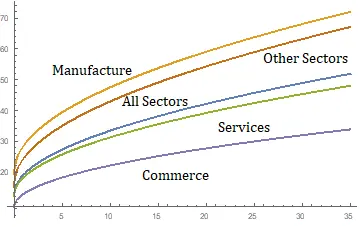How to stay young forever and not succumb to the flow of time? And in general – is it possible? Opinion of the philosopher Pierre-Henri Tavoyo.
We forget that relatively recently we were determined by our age. In the old days, the stages of life did not depend on our sensations or appearance at all. Age was a quasi-scientific category that was imposed on us from the outside as part of the general world order. The predictability of the world, inherent in these periodic systems, fascinated the public, even the simplest ones. Thus, medieval teachings more or less corresponded with the doctrines inherited from Antiquity and from the great Pythagoras. Various “number systems” were considered as a practical guide to the device of life.
Read more:
- Long road to adulthood
Three ways to think about age:
- Seasonal model: each element (air, fire, water, earth) is responsible for the season, and for the character, and for the period of life (childhood, youth, maturity, old age).
- Astrological model: each of the seven planets has its own time (early childhood, childhood, adolescence, youth, maturity, maturity, old age).
- Numerological model: critical years of life – 49, 63 and 81.
The first model – seasonal – was inspired by the theory of the four elements that make up the sublunar world. Each of these elements – air, fire, water and earth – is associated with a certain season, mood, character and age.
Read more:
- Mature age… of the brain
It was assumed that they determine the composition of all things. The air was associated with hot and moist blood, with spring, childhood. Fire was associated with yellow bile (in Greek khole, hence the word “choleric”), but also with summer and youth. Black bile (melas – black; khole – bile, hence “melancholic”) came from the earth and meant autumn, fading maturity. Cold and wet lymph, like water, referred to the night, winter, old age. These cosmic categories underlay the system of both theoretical and practical connections that until recently determined medical thought and prescriptions of pharmacists. So, if an adult person drank too much wine that resembled blood, one would expect that he would fall into childhood … and lose the ability to walk and talk!
Superimposed on this system of four main periods of life was a second model based on connections with the planets. It was with the seven planets that were known at that time that the seven periods of life were associated. Early childhood was associated with the Moon, reasonable age with Mercury (who was considered, in particular, the god of science and art), adolescence was associated, of course, with Venus, while ardent youth was directly influenced by the Sun. Mars was related to maturity, and Jupiter embodied the image of a harsh and wise maturity. Finally, the cold Saturn completed this chain (already in the name of this deity there is the idea of saturation – “saturation for years”).
Read more:
- How our stupidity grows
But that’s not all. The astrological layout of life according to the seven planets was complicated by the numerological division of life into seven- or nine-year periods. The magic of numbers made it possible to determine the critical years of our lives, in which all dangers were concentrated. Exceptional vigilance should have been exercised at 49 years old (7×7), 63 years old (7×9) and 81 years old (9×9).
These theories were very popular during the Renaissance and were shared by many great minds. Astrology and numerology still have not completely lost their charm. Today we meet them (of course, in a milder version) in the horoscopes of glossy and other magazines that supply us with recipes for prolonging youth (which, of course, we only read in line at the hairdresser). However, these publications are characterized by a strange ambivalence: on the one hand, we are convinced that our fate is predetermined, and on the other hand, they are urged not to pay attention to the years. So the modern attitude of “being yourself” is not so easy to combine with the unwillingness to live in accordance with one’s age.
* See Philosophie, 2010, no. 40 for details.










